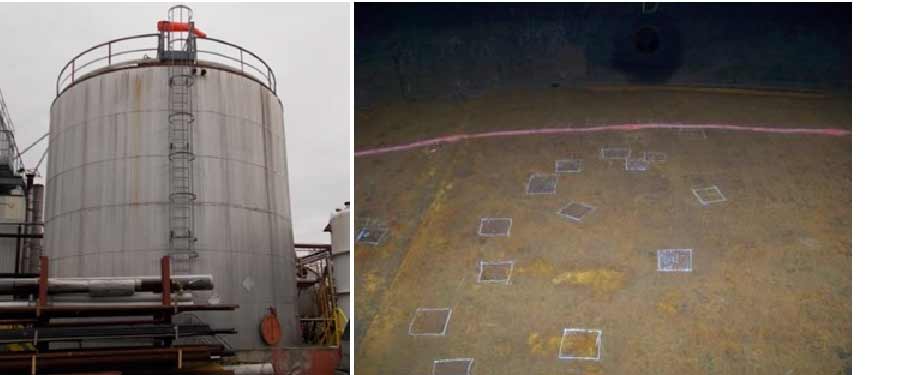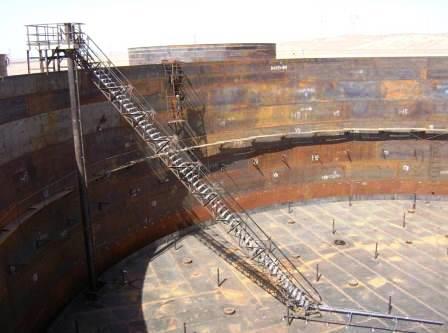
Comprehending the Relevance of Rigorous Container Welding Inspection Processes in Preventing Failings and Enhancing Lifespan
In the world of industrial operations, the value of rigorous storage tank welding inspection processes can not be overemphasized. These examinations serve as a vital line of protection versus prospective failures that can not only compromise property stability but likewise posture severe security risks. By applying various examination methodologies, companies can spot defects early, thus avoiding expensive effects and expanding the life of their tank. The landscape of compliance and best techniques is ever-evolving, motivating a more detailed evaluation of how these procedures can be optimized for optimum performance. What are the arising trends and challenges that practitioners must navigate?
Relevance of Welding Examinations
Acknowledging the important function of welding evaluations in preserving architectural honesty, these procedures make sure that welds fulfill recognized requirements and specs - Tank Welding Inspection. Effective welding examinations are critical in the building and construction and upkeep of containers, as they straight impact the resilience and safety and security of the frameworks. By identifying prospective shortages, such as incorrect techniques or product problems, evaluations mitigate the danger of devastating failings
Welding assessments incorporate various approaches, including visual evaluations, non-destructive testing (NDT), and evaluations of welding treatments. Each approach offers to validate the high quality and conformity of welds with market laws, consequently securing both employees and ecological interests. Normal inspections cultivate a culture of responsibility and excellence within the labor force, ensuring that all group participants adhere to best methods.
In addition, these examinations contribute to the general lifecycle monitoring of storage tanks by determining wear or destruction early in the procedure. By attending to these issues proactively, companies can expand the functional life-span of their properties, ultimately leading to set you back financial savings and boosted reliability. In summary, the value of welding examinations can not be overstated; they are essential for guaranteeing safety and security, durability, and compliance in storage tank building and construction and maintenance.
Common Sources Of Storage Tank Failings
Recognizing the typical reasons for container failures is important for protecting against tragic cases and making sure the durability of storage systems. One common root cause of storage tank failure is deterioration, which can substantially compromise the architectural stability of tanks gradually. Ecological aspects, such as direct exposure to moisture, chemicals, and temperature changes, can increase this process.
One more essential variable is incorrect welding strategies, which may lead to flaws like cracks or insufficient joints. These issues can endanger the container's toughness and bring about leaks or ruptures. Furthermore, poor upkeep techniques can cause unseen damage, eventually boosting the threat of failing.
Style problems, consisting of inadequate density or inadequate product choice, can likewise add to container susceptabilities. Functional factors, such as overfilling or direct exposure to extreme pressures, can strain the storage tank past its designated limitations.
Key Inspection Techniques
Reliable evaluation methods play an important role in reducing the risks related to storage tank failures. A detailed approach to tank welding evaluation involves a number of crucial techniques, each developed to identify prospective defects and ensure architectural stability.
Aesthetic examination stays the initial line of protection, allowing inspectors to determine surface abnormalities such as splits, rust, or imbalance. This technique is usually supplemented by non-destructive screening (NDT) approaches, which are necessary for evaluating weld quality without jeopardizing the container's honesty.

Moreover, magnetic fragment testing (MPT) and dye penetrant testing (DPT) work for detecting surface issues in ferromagnetic products and non-porous surfaces, respectively. Each method has its strengths and restrictions; consequently, a mix of techniques is usually utilized to attain detailed evaluation outcomes.
Benefits of Rigorous Assessments
While the immediate costs of extensive evaluations may appear challenging, the lasting benefits substantially surpass these preliminary linked here investments. Executing complete examination processes not just improves the stability and safety and security of storage tank structures however additionally decreases the threat of disastrous failings that can result in substantial monetary losses and environmental damage.
Extensive assessments help determine possible problems early in the welding procedure, enabling timely rehabilitative activities that protect against expensive repair services or substitutes down the line. This positive method promotes a culture of quality control, where adherence to ideal techniques comes to be implanted in operational procedures. Routine assessments contribute to increased asset durability, as they make sure that storage tanks stay in optimum problem throughout their lifespan.
In enhancement, the documentation generated from these assessments functions as a beneficial source for maintenance preparation and efficiency analyses. This data-driven strategy can additionally improve operational efficiency, resulting in reduced downtime and enhanced efficiency. Eventually, extensive assessments not only secure the architectural integrity of containers however also offer considerable financial advantages, strengthening the idea that buying high quality assurance is a sensible decision for any kind of organization associated with tank operations.
Regulatory Specifications and Conformity
Governing standards and conformity are try this vital components of container welding evaluation processes, as they establish the framework for making certain security and high quality in procedures. Conformity with these criteria not just reduces risks but likewise boosts the general stability of bonded structures. Various companies, consisting of check out here the American Society of Mechanical Designers (ASME) and the American Oil Institute (API), give guidelines that determine appropriate techniques for welding, inspection, and testing.
These requirements mandate making use of certified personnel, the execution of rigorous inspection methods, and adherence to particular welding treatments. By lining up with regulative requirements, organizations can ensure that their tanks satisfy the necessary safety and efficiency requirements, thereby reducing the probability of disastrous failures that can bring about substantial financial losses and ecological damages.

In addition, regulative compliance promotes a society of responsibility and continual improvement within the welding and fabrication fields (Tank Welding Inspection). Normal audits and assessments make certain that methods stay straightened with progressing requirements, consequently advertising long-term integrity and functional effectiveness. Ultimately, adherence to regulative criteria not only secures assets yet additionally boosts the lifespan of welded tanks, guaranteeing they serve their designated function successfully over time
Verdict
To conclude, extensive tank welding inspection procedures play an important function in stopping failures and extending the lifespan of storage frameworks. By determining possible deficiencies through various examination techniques, organizations can reduce risks connected with container honesty. The implementation of these assessments fosters a society of quality control, bring about boosted property long life, lowered upkeep costs, and boosted functional efficiency. Following governing standards even more emphasizes the significance of these assessments in maintaining safety and integrity within the sector.